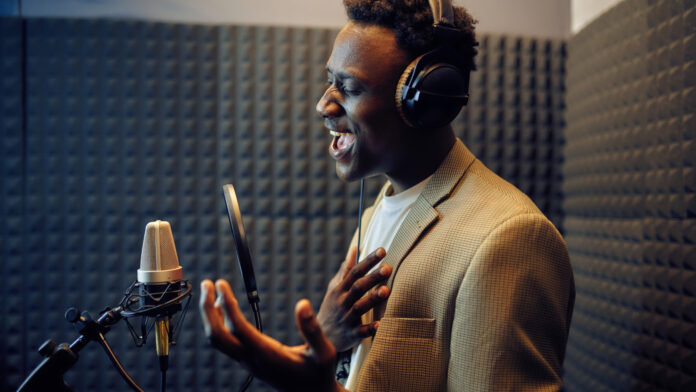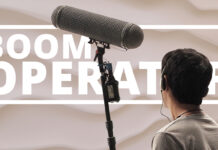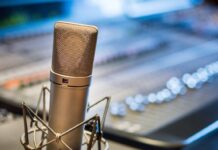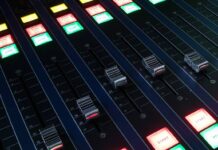In a nutshell
- When the original dialogue recordings made on set cannot be used, filmmakers turn to ADR
- ADR is the process of re-recording an actor speaking their lines in sync with video playback of the relevant scene
- ADR is also used to deal with script changes made in post-production and to help with the edit
Movies are a visual medium, and so the role that sound plays is often underappreciated. However, bad audio can make even the most beautifully shot film seem like a home movie. Sound recordists work miracles on set to capture the words spoken by the actors. Despite this, it’s not always possible to use the original dialogue recordings in the final film. That’s when filmmakers turn to the process known as ADR.
So, what is ADR?
ADR stands for “Automated Dialogue Replacement,” though some say Additional Dialogue Replacement or Additional Dialogue Recording. Regardless, all of these terms mean the same thing. Put simply, ADR is a post-production process where actors’ dialogue is rerecorded in a controlled environment such as a sound studio. These recordings are then used in the edit to replace the actors’ audio captured at the time of filming.
The ADR process may also be used to capture the sounds of an actor breathing or grunting during a fight scene. However, the recording of most sound effects in post-production is part of a process called Foley. To find out more about Foley, read this article.
Why do filmmakers use ADR?
Recording ADR adds time and expense to post-production. It’s also a process that most actors don’t enjoy. As such, filmmakers try to capture as much of the dialogue as possible while on set or on location. However, the proportion of ADR in most films is still likely to be around 10-30 percent on average. So why is this?
Noisy environment
When filming on location, even big Hollywood productions can struggle to control the environment. If you are shooting in a city, there will often be unwanted background noise, such as traffic sounds or dogs barking. Similarly, the sounds of the sea on the beach or wind through the trees in a forest make it hard to record usable audio.
Poor audio quality
Sometimes the original audio recordings aren’t clear enough for the audience to understand what’s being said. This may be because of the equipment used or poor microphone positioning by the sound recordist. In addition, when filming wide shots or during action sequences such as fight scenes, it can be difficult to get the microphone close enough to the actors to record clean audio.
Poor delivery by an actor
If an actor has a cold or is feeling unwell during filming, the sound of their voice will be affected. Rather than hold up production, the director may decide to go ahead and then get the actor to ADR their lines later. Additionally, an actor might stumble over a single word in an otherwise flawless performance. This misspoken word will be replaced in post-production with ADR.
Script changes
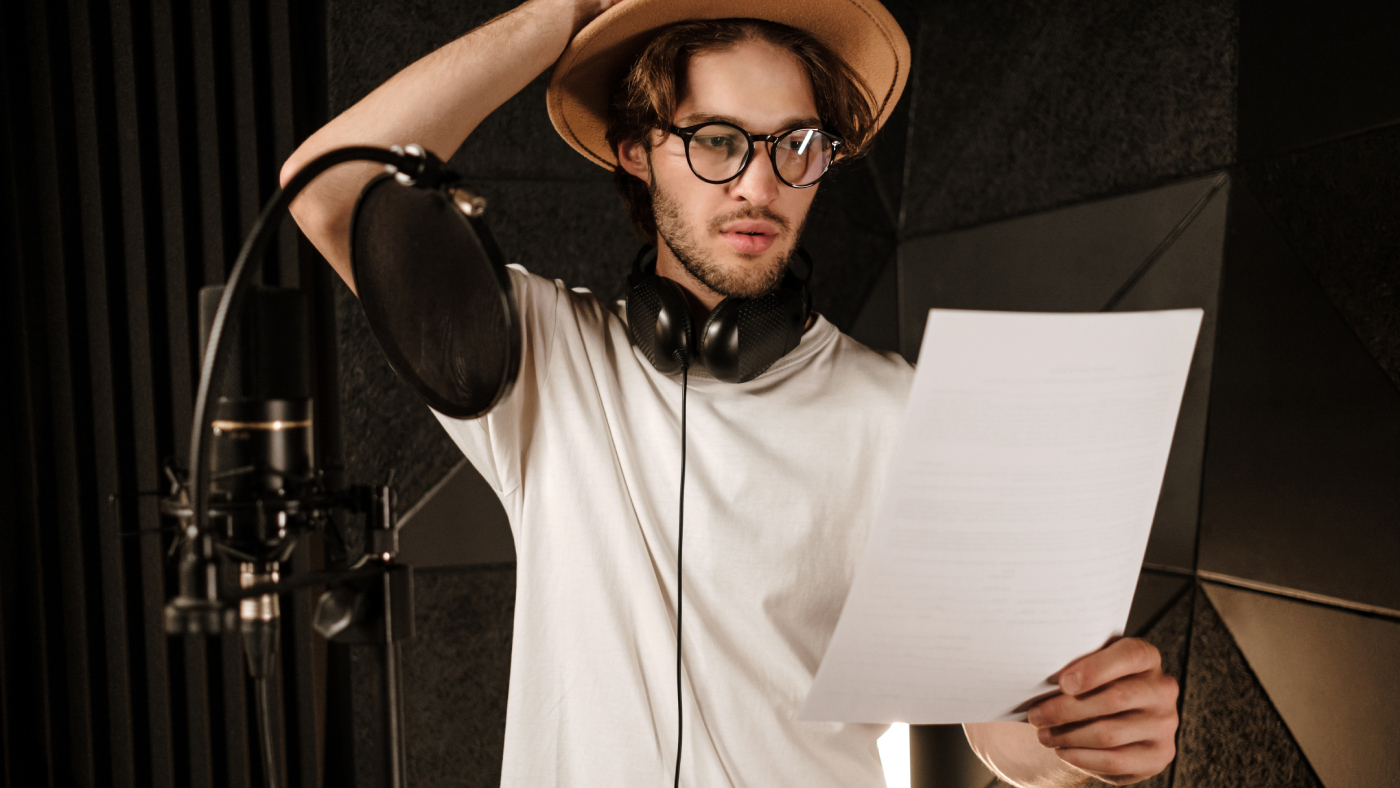
Movie scripts are rewritten throughout the filming process and even during post-production. This might require an actor to record their lines with a change to the words used. An actor may also have to change their character’s accent if the script is changed.
Editing
The need for ADR can arise during the editing process. When cut together with other shots, an actor’s delivery might seem out of keeping with the emotion of the scene. For example, the actor will then be asked to rerecord their dialogue with a change of inflection to make it less or more forceful. In addition, extra additional dialogue may be needed to cover a gap in the storyline. Often these lines will be delivered by an actor with their back to the camera. As you can’t see the character’s face, there is no need to lip-sync the lines.
How is ADR recorded?
Despite its name, ADR is far from an automated process. In the past, a loop of the film would be made with the line of dialogue so it can be rerecorded. This would be then projected over and over, which is why you may hear ADR referred to as “looping.”
Sound studio
ADR recordings take place in a sound studio or similar controlled acoustic environment. Video clips with the lines which need to be rerecorded will be projected or shown on a large monitor. Ideally, the actor should be recorded with the same type of microphone as used at the time of filming. This will help to ensure that the new recordings have a sound consistent with the original audio.
Multiple takes
The actor has the difficult job of delivering their lines; they have to make sure their words are in sync with the movements of their mouth recorded on film. A series of beeps will usually be added to the start of the clip to help cue the actor. Even so, getting a good ADR recording can take multiple attempts, especially if the dialogue is complex. The director may also ask the actor to try different styles of delivery as well.
Acting challenges
Another challenge for the actor is that they must recreate their character’s emotions while on their own in a studio. This is a very different atmosphere compared to being on set and interacting with other cast members. You can now see why most actors don’t enjoy the ADR process.
Once the new dialogue has been recorded, it will be used in the edit to replace the original sound recording.
Examples of ADR
Most films will include a proportion of ADR in their soundtrack. Action movies will often have more need for ADR as the sets can be noisy due to practical effects work. Francis Ford Coppola’s Apocalypse Now faced additional challenges from the nature of the locations. As a result, this movie required around 80 to 90 percent of the dialogue to be replaced with ADR.
Let’s take a look at a few more examples of ADR.
“Logan” (2017) – Hugh Jackman
Wolverine actor Hugh Jackman shared a video of one of his ADR performances for the film “Logan.” The video shows Jackman recording his audio for a fight scene where Wolverine is running through a forest. It’s a great glimpse behind the scenes of the ADR process in a big-budget movie. It also demonstrates how hard an actor has to work to recreate the emotion of their original performance.
“Elysium” (2013) – Jodie Foster
At the time of filming the science fiction movie “Elysium,” Jodie Foster spoke her lines with a French accent. However, the audience during the test screenings gave negative feedback on her accent. As a result, the studio made her rerecord all of her dialogue, even though the director Neil Blomkamp preferred the original audio.
“Lord of the Rings” (2001–2003)
Despite how the locations appeared on screen, much of Peter Jackson’s “Lord Of The Rings” series was filmed near an airport. The noise from aircraft meant flying overhead meant that around 90 percent of the original dialogue had to be replaced with ADR.
“Blade Runner” (1982)
ADR isn’t always undetectable. In this sequence from “Blade Runner,” you can hear a change in the sound of the actor’s voice between 00:16 and 00:19. The line “I’ve got four skin jobs walking the streets” was added with ADR to replace the original line recorded on set. In the original version, the character said “five skin jobs,” but the script was changed during the edit.
Fixing it with ADR isn’t a fix-all
ADR is not a magic bullet to “fix it in post.” Sometimes you will hear a line in a film, often delivered off camera, which sounds different from the rest of the dialogue from that actor. Other times, the lip sync may be far from perfect. However, most ADR work in Hollywood is seamlessly inserted into a film, but it takes a ton of time and effort. It’s always best to avoid ADR if possible.
Now that you have an insight into the process, you should have a newfound respect for the work of the actors and the sound recordists involved in ADR.

